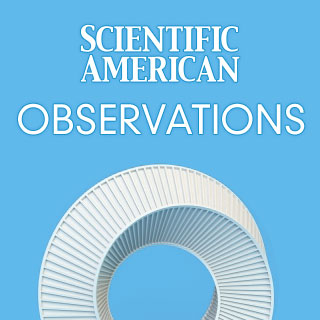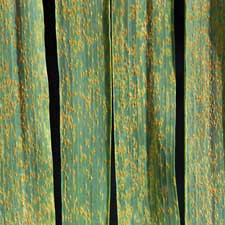
Jul 22, 2010 03:00 PM in Basic Science | 1 comments
Island hoping: Japan breeding program aims to save rare albatross
By John Platt
 About 2,700 short-tailed albatrosses (Phoebastria albatrus) currently fly over the Pacific Ocean. The largest seabird in that area of the world, the short-tailed albatross almost went extinct 100 years ago after the birds were overhunted for their feathers. The species is much healthier now thanks to more than 50 years of conservation efforts, but it still only breeds on a few volcanic islands, making it incredibly vulnerable to being wiped out by a single bad weather system or other event. Now a breeding program not only aims to increase the short-tailed albatross population but also to allow the birds to spread their wings to other islands, according to a report from the Daily Yomiuri in Japan.
About 2,700 short-tailed albatrosses (Phoebastria albatrus) currently fly over the Pacific Ocean. The largest seabird in that area of the world, the short-tailed albatross almost went extinct 100 years ago after the birds were overhunted for their feathers. The species is much healthier now thanks to more than 50 years of conservation efforts, but it still only breeds on a few volcanic islands, making it incredibly vulnerable to being wiped out by a single bad weather system or other event. Now a breeding program not only aims to increase the short-tailed albatross population but also to allow the birds to spread their wings to other islands, according to a report from the Daily Yomiuri in Japan.
The project, led by the Yamashina Institute for Ornithology and assisted by Japan's environment ministry, is working on multiple fronts: First, grass is being planted on Torishima Island, one of the birds' two breeding sites. The volcanic island is rocky and prone to landslides, so it is hoped that the plant life will help stabilize the ground under the ungainly birds' feet.
(The other short-tailed albatross breeding site is the uninhabited Senkaku Islands, which are officially controlled by Japan but contentiously claimed by China and Taiwan.)
Second, 10 albatross chicks were moved to "nearby" Mukojima Island, about 370 kilometers away, with the aim of creating a new breeding site. The birds there are raised in artificial nests, with a hand-fed diet of fish, squid, krill and vitamins. The site's appeal for the birds is enhanced by a solar-powered sound system that mimics the sounds of a regular albatross colony as well as a series of short-tailed albatross decoys, which make the baby birds feel as if they are still part of a flock.
Already two batches of young birds have left the island; they bear solar-powered satellite transmitters attached to their legs to enable migratory tracking. The hope is that they will return to Mukojima in a few years when they are ready to start breeding.
Yamashina personnel tested their plan by raising and releasing another albatross species that exhibit similar reproductive behavior. The black-footed albatross (P. nigripes ), like its short-tailed cousin, almost always returns to breed on the same island where it hatched. The test has already had its first success, as three of the nine black-footed albatross raised on the island have already returned. "This is a big step forward," Yamashina Deputy Director General Kiyoaki Ozaki told the Daily Yomiuri.
The short-tailed albatross is also known as Steller's albatross, named after naturalist Georg Wilhelm Steller, who first discovered it. Steller also discovered and named the famed Steller's sea cow (Hydrodamalis gigas), a now-extinct species of manatee.
Photo: Short-tailed albatross, via Wikipedia
Read More About: albatross, birdDiscuss This Article
Subscription Center
World Changing Ideas Video Contest
-
 Innovation is the key to a better future. Enter your own World Changing Ideas videos in our contest. For examples, see "World Changing Ideas," Scientific American; December 2009.
Innovation is the key to a better future. Enter your own World Changing Ideas videos in our contest. For examples, see "World Changing Ideas," Scientific American; December 2009.
Most Popular Blog Posts
When should a scientist's data be liberated for all to see?
The warm, fuzzy side of climate change: Heftier marmots
Frans de Waal on the human primate: Strength is weakness
Frans de Waal on the human primate: Is it "behavioral sink" or resource distribution?
Frans de Waal on the human primate: Make love, not war
Editor's Pick
-
 12 Events That Will Change Everything, Made InteractiveThis Web-only article is a special rich-media presentation of the feature, "12 Events That Will Change Everything," which appears in the June 2010 issue of Scientific American. The presentation was created by Zemi Media. Find all our other interactive offerings here.
12 Events That Will Change Everything, Made InteractiveThis Web-only article is a special rich-media presentation of the feature, "12 Events That Will Change Everything," which appears in the June 2010 issue of Scientific American. The presentation was created by Zemi Media. Find all our other interactive offerings here.
Basic Science Newsletter
Get weekly coverage delivered to your inboxVideo
Podcasts
-
60-Second Science
RSS ·
iTunes
Caterpillar's Innards Move Before It Does
click to enable
-
60-Second Science
RSS ·
iTunes
Superstar Is Remnant of Three-Star System Mangled by Black Hole
click to enable
Slideshows
Science Jobs of the Week
- Chief Scientific Officer
Tufts Medical Center
Boston, MA USA - Postdoctoral Researcher to Modify Metalloenzymes For Use as Fuel Cell Catalysts
Yeshiva University
500 West 185th Street, New York, NY, USA - Joint Postdoctoral Program of the Associateship Programs
National Research Council
Maryland, USA - Postdoctoral position in bioinformatics / computational biology
University of Pennsylvania School of Medicine
Philadelphia, PA, USA - Faculty Position - Pharmacogenomics of Plant Products
NC State University
Raleigh United States - > More science jobs from
















